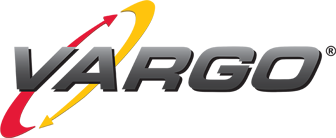The following article is from Logistics Management and Supply Chain Management Review.
ProMat 2015: It’s Still All About the Software…Again
By Bob Trebilcock, Editor at Large
Logistics Management
At last year’s Modex, I wrote that “it’s all about the software.” I may sound a little like a broken record, but it’s been a theme at Modern of late. here but I just came back from ProMat 2015 in Chicago. And, while there was plenty of exciting mechanical equipment on display, including Opex’s goods-to-person picking solution, shuttles and robots at Dematic and Intelligrated, a new AGV at JBT and a fully-automated octopus stretch wrapper at Muller, the real talk was software.
Why? Because increasingly the hardware is just a means to an end: If you spent any time at the booths of our leading systems integrators what’s clear is that the software is what makes our increasingly complex order fulfillment processes possible. Perhaps, the industry is about to take a page from Apple’s playbook, pairing elegant products with superb software.
If you’re looking for bullet points, consider the following:
- At the Dematic booth, I had a chance to see the robotic solutions they’re developing for piece picking applications, but the real discussion—and much of the company’s R&D – was the evolution of the company’s software solutions.
- At the Intelligrated booth, I had a chance to speak to Kevin Roach, the new executive vice president and general manager of Intelligrated Software. Roach does have experience in the materials handling industry, but for the past 20 years, his focus has been on supply chain software, including a stint as a senior executive at Epicor, one of the leading ERP providers.
- Kevin Reader, Knapp’s new director of business development and marketing, recently told my colleague Josh Bond that 25 percent of Knapp’s employees worldwide “are focused on software.”
- Systems integrators like Vargo and Fortna not only touted their engineering chops, they also promoted their proprietary warehouse execution and control systems.
This focus on software was driven home to me with two conversations I had last week in addition to the retailer mentioned above. The first was a vice president of operations for a leading food processor. I asked him about a pallet handling automated storage technology he had installed in one of his plants. He began by saying “we’re having all kinds of problems.” But as we talked further, his issues had nothing to do with the operation of the system. Mechanically, it did exactly what it was supposed to do. The problem, he explained, is that the system was designed and installed to handle the number of SKUs and throughput going through the facility at the time. Since then, requirements had changed and the system couldn’t keep up: “We have to tweak the software,” he told me.
The second was a conversation I had with the operations team at a very highly-automated DC in the suburbs on Thursday. They had installed a robotic goods-to-person picking system to handle a specific line of business. Their biggest challenge when they implemented the system two years ago, they said, “was getting the software right.” The robots did what they were supposed to do from day one, but getting the throughput was a challenge until they got the software right.
What then are our customers looking for and what does our industry need to deliver? I think it comes down to a couple things.
One size does not fit all: Increasingly, our customers are looking for different picking methodologies and handling solutions within the four walls of their facility. It’s not just about omni-channel fulfillment, the buzz word of the day. Instead, I think it has to do more with finding the most cost-efficient way to slice and dice SKUs based on physical characteristics, SKU velocity and order profiles. At the same time, just because a technology works in one facility doesn’t mean it’s going to work in another facility, even within the same distribution network. The suburban distribution center I visited on Thursday is in the process of getting quotes for a completely different goods-to-person technology in another facility shipping similar products, but with different velocities and order profiles.
Flexibility, visibility and access: Based on conversations I had on the show floor, I think our customers are looking for flexibility, visibility and access. They want systems that will give them access to more real-time information about what’s going on in their facilities so that they have the flexibility to respond now, as events are occurring, and not after the fact.
While we’ve been writing about this trend for several years, it seems as if the industry and end users have reached an inflection point: We’ve moved past the early adopters and software is now poised to become the competitive differentiator.


